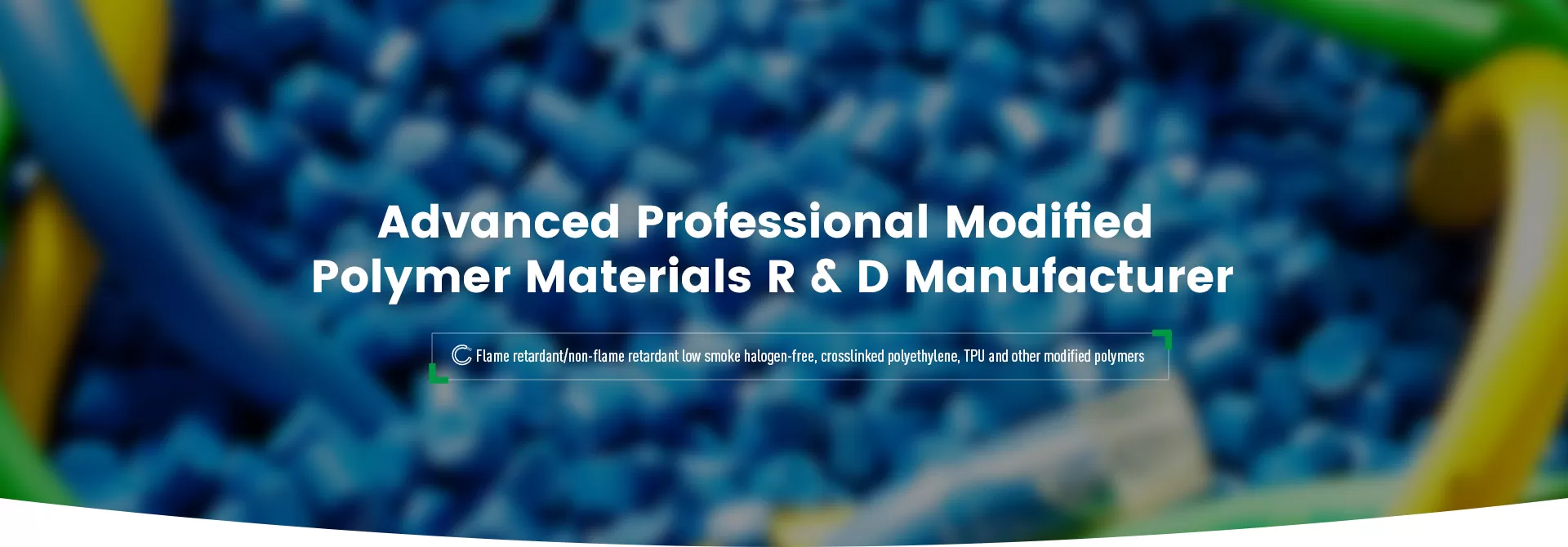
Ordinary cables can ignite with a single spark, sparking a fire and releasing smoke within seconds. Without the right flame-retardant compound in the cable jacket, the cable itself can become a fuel source.
Flame-retardant (FR) compounds effectively mitigate this risk. They not only slow the spread of fire but also reduce the production of toxic fumes, protecting personnel and preventing damage to property and critical equipment. FR cable compounds have become indispensable in safety-critical environments such as hospitals, data centers, rail transit, and schools.
This article explains why flame retardancy is crucial for cable materials and the technical mechanisms of action of different FR compounds.
Are you still using non-FR jacketed cables to save money? The risks of doing so far outweigh the potential savings.
Cables often run through ceilings, ducts, and equipment. Once a single wire ignites, it can quickly spread to all cables. In enclosed spaces, smoke can quickly accumulate, making fires extremely rapid and dangerous.
Inhibits ignition caused by sparks or overloads
Slows the spread of flames along the cable
Limits the release of smoke and toxic gases
Buys time for evacuation and emergency response
Without fire protection, cable fires often cause severe damage, system downtime, and the release of life-threatening toxic fumes.
International and regional standards specify specific requirements for flame-retardant performance in cables, such as:
IEC 60332: Flame Spread
IEC 61034: Smoke Density
IEC 60754: Halogen Content
UL 94: Material Combustion Characteristics
The following locations are often required to use flame-retardant cables:
Public buildings and high-density areas
Mass transportation systems: subways, tunnels, airports
Nuclear power facilities, defense systems, and data centers
Offshore platforms and ships
In addition, insurance companies often require proof of compliance with regulations; failure to meet these standards may invalidate fire claims.

| Project | Non-Flame-Retardant (FR) Cable | Flame-Retardant Cable With Appropriate Compound |
| Flame spread | High | Minimum (IEC 60332-1/3) |
| Smoke emissions | Dense, black, toxic | Improves visibility and reduces gas emissions |
| Equipment damage | Widely | Safer |
| Evacuation time | Hazardous | Extended use and greater safety |
| Code compliance | Most fail international testing | Passed international testing |
Why do some compounds suppress flames while others act like fuel? The key lies in chemical reactions and thermal control.
Flame retardant systems generally work through four mechanisms:
Some compounds release gases that interfere with the chemical reactions in a flame.
Traditional halogenated systems (such as bromides and chlorides) release HBr or HCl, which suppresses free radicals and hinders the flame reaction.
Modern halogen-free systems (such as phosphorus-nitrogen systems) release phosphorus radicals, blocking the combustion reaction.
Forming a polyphosphoric acid layer protects the polymer surface.
Intumescent additives expand at high temperatures, forming a foamy carbon layer; other types of additives form ceramic oxides. ATH (aluminum trihydrate) and MDH (magnesium hydroxide):
Decomposes to release water vapor
Absorbs heat, lowering surface temperatures
Produces a thermal barrier, preventing heat conduction and flame spread
Reducing smoke is critical to safety:
Phosphorus additives: Promote charring, retaining carbon in a solid form, reducing smoke emissions
Metal hydroxides: Dilute combustible gases and smoke precursors
Charred layer: Reduces sustained combustion rate and suppresses smoke concentration
Endothermic flame retardants slow polymer thermal decomposition by lowering ambient temperature:
ATH: Absorbs up to 1.7 kJ/g of heat
Magnesium hydroxide: Releases water vapor upon decomposition, cooling the surface and diluting the fuel.
| Mechanism | Typical Additives | Key Functions |
| Free radical quenching | Halogenated flame retardants, phosphorus compounds | Stops flame chemistry |
| Expansion/carbonization | APP, pentaerythritol, melamine | Blocks oxygen and heat with a foam layer |
| Endothermic cooling | ATH, MDH | Absorbs heat, cools the surface, and releases moisture |
| Smoke suppression | Phosphorus, metal hydroxides | Captures carbon, reduces soot, and provides clean combustion |
Different applications require different flame-retardant strategies:
| Applications | Key Requirements | Recommended Flame-Retardant Composite Material |
| Low-voltage power cables (indoor) | LSZH, low smoke, 90°C rating | ATH-based halogen-free compounds |
| Medium-voltage insulation (outdoor) | Water tree resistance, minimal impurities | Phosphorus + silane XLPE formulations |
| Transportation/railway cables | HL2 or HL3 (EN45545), oil resistance | Intumescent + char-forming XLPO sheathing |
| Heat shrink tubing | Shrinkage resistance, flame retardant grade VW-1 | EB-crosslinked XLPO + clean FR system |
| Appliance power cables | Thin wall, 105°C–125°C, RoHS compliant | Phosphorus-based low-halogen XLPO |
| Solar photovoltaic cables | UV, flame, and temperature cycling | Silane XLPO with ATH + UV stabilizer |
Angreen tested a phosphorus-based flame retardant system as a replacement for aluminum hydroxide (ATH) in low-smoke, zero-halogen (LSZH) thermoplastic jacketing. The results showed:
The material successfully passed UL 1581 VW-1 and IEC 60332-1 standards.
Filler usage was reduced by approximately 50%.
The jacket was thinner and easier to extrude.
The cable was lighter and more flexible.
These improvements not only reduced material costs but also improved overall performance, demonstrating that new flame retardant systems are often more effective and advantageous. Flame-retardant cable compounds are more than just about meeting regulations; they are truly life-saving and critical to system safety.
Whether used in hospitals, rail transit, control panels, or solar power plants, the compound used within the cable ultimately determines how it performs in a fire environment.
When selecting a flame retardant compound, ensure:
It meets flame, smoke, and toxicity requirements
It maintains a balance between mechanical properties and processability
It fits within your budget and processing constraints
Need help selecting the right flame retardant system or developing a custom halogen-free formulation? Angreen can provide ATH, MDH, intumescent systems and phosphorus-based solutions designed for cable insulation and sheathing.